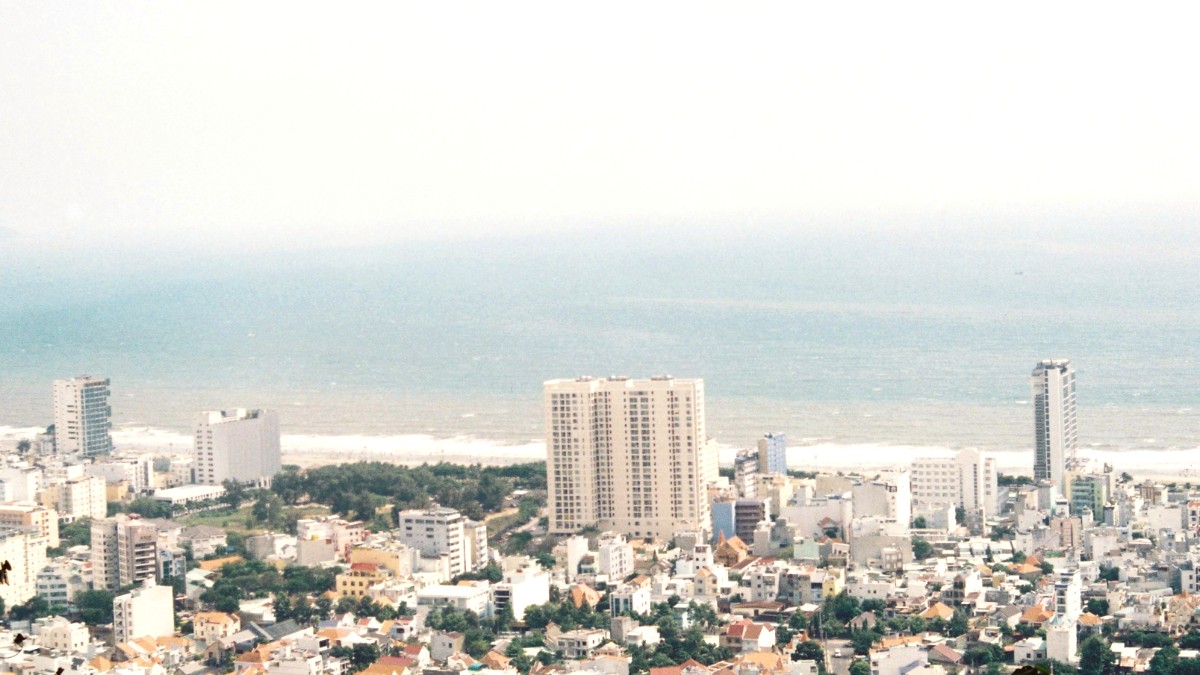
Around Ho Chi Minh City, Vietnam
Imagine Vung Tau as a destination where you shed the city's fast pace. You wake to the sound of gulls, spend your days walking along wide beaches, and your evenings enjoy fresh seafood under the stars. The city is a distinct appeal for those who appreciate accessible natural beauty combined with activity to maintain interest. It is a place where you observe local life unfold against a backdrop of scenic ocean views. This guide prepares you for such an experience, inviting you to discover the best of Vung Tau.
Vung Tau occupies a distinct position on Vietnam's southeastern coast. It sits at the tip of a small peninsula, stretching into the South China Sea, which Vietnamese people refer to as the East Sea. This geographical feature gives the city its unique character, with water surrounding it on three sides.
Mountains rise behind the city, offering elevated viewpoints and a dramatic backdrop to the coastal plains. The city lies about 96 kilometers (60 miles) southeast of Ho Chi Minh City, making it a desirable destination for a short trip.
Vung Tau is a rich history, reflecting Vietnam's broader narrative from dynastic rule to colonial influence and modern independence. Its story begins centuries ago under the Nguyễn Dynasty, when it served as a significant port. Its strategic location made it a valuable asset for trade routes and as a point of defense, controlling access to the Saigon River and inland areas. This early recognition of its importance laid the groundwork for its future development.
The city’s transformation into a resort town began dramatically during the French colonial period. The French renamed it Cap Saint-Jacques and poured resources into developing it as a retreat for the French elite. This era saw the construction of elegant villas, administrative buildings, and infrastructure designed for leisure and relaxation. During the Vietnam War, Vung Tau played a different, yet equally impactful, role. Its accessible beaches and proximity to Saigon (now Ho Chi Minh City) made it a preferred recreational and logistical base for Australian and US forces.
Served as an important port and defense point.
Developed into an elite resort town with elegant villas and infrastructure.
A testament to French engineering and maritime interests.
Recreational and logistical base for Australian and US forces.
Continued growth as a tourism hub and oil/gas industry center.
After the war, Vung Tau continued its development, shifting its focus. It remains a popular tourism hub for both domestic and international visitors. Simultaneously, it is a center for Vietnam’s burgeoning oil and gas industry, contributing significantly to the national economy. This dual identity—a serene beach destination and an industrial center—defines Vung Tau today.
The White Palace, a beautiful colonial villa, acts as an architectural reminder of the French era, showing a blend of European design with Vietnamese materials. These structures continue to define parts of Vung Tau's architectural landscape, offering glimpses into its colonial past.
The proximity to the sea deeply influences Vung Tau's climate, culture, and economy. The ocean provides a constant, moderating influence on temperatures, creating a generally warm, tropical environment throughout the year. Its coastal position also made it a natural port and a strategic point for both trade and defense throughout its history.
Exploring Vung Tau means walking through layers of time, where each era has contributed to the city's character.
Vung Tau presents a straightforward array of attractions, each offering a distinct experience. The city's appeal lies in its accessibility and the clear activities it offers.
Vung Tau’s relaxed seaside atmosphere defines much of its charm. It acts as a popular weekend getaway for residents of Ho Chi Minh City. This means the city experiences distinct shifts in its energy. Weekdays often bring a quieter, more peaceful ambiance, with fewer crowds on the beaches and at attractions. On weekends and public holidays, Vung Tau transforms into a lively hub. Families and groups from the city flock to its shores, filling hotels, restaurants, and beaches with activity. The city adapts well to these ebbs and flows, always ready to welcome visitors seeking a refreshing coastal escape.
Front Beach for scenic strolls, Back Beach for swimming and sunbathing.
A towering statue with panoramic city views from its arms.
Historical landmark offering 360-degree vistas of the city and sea.
The White Palace (Bạch Dinh) is an elegant, colonial-era villa. Built between 1898 and 1907, it served as a retreat for French governors-general and later for Vietnamese emperors. Today, it operates as a museum, demonstrating artifacts and offering a glimpse into its past as a royal residence.